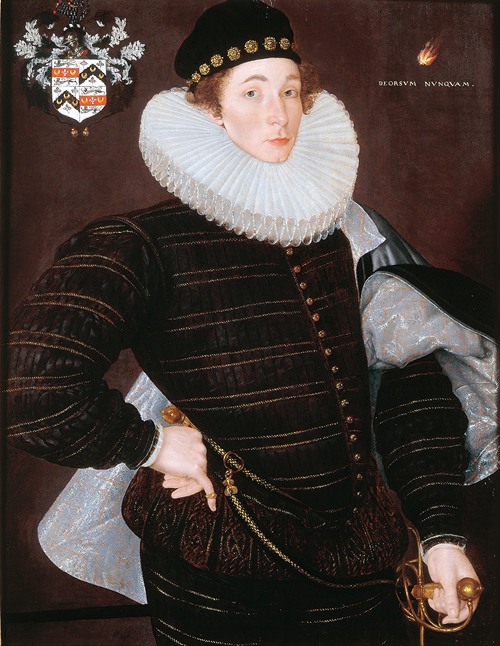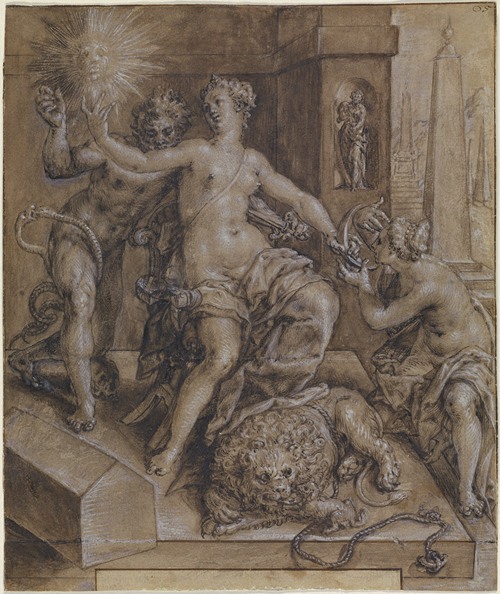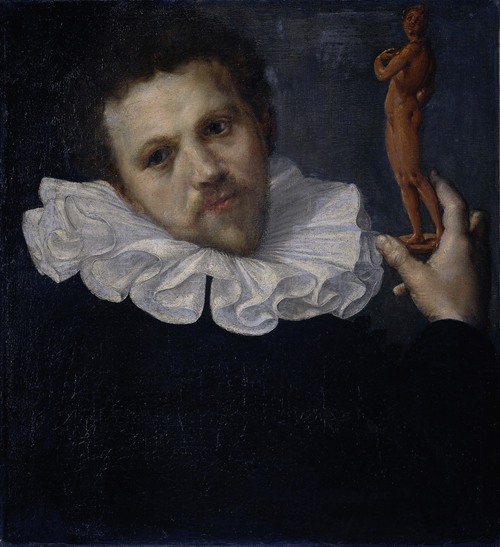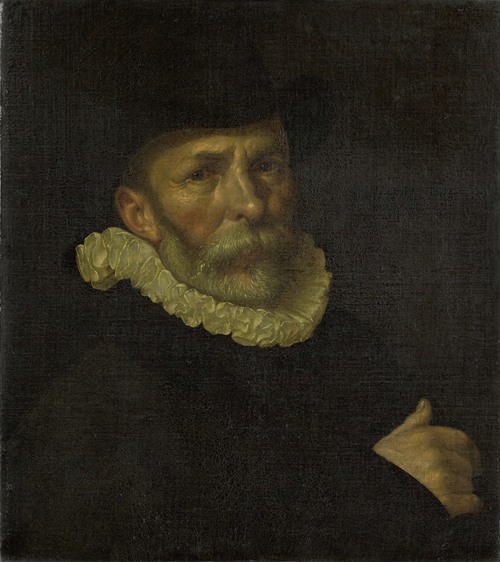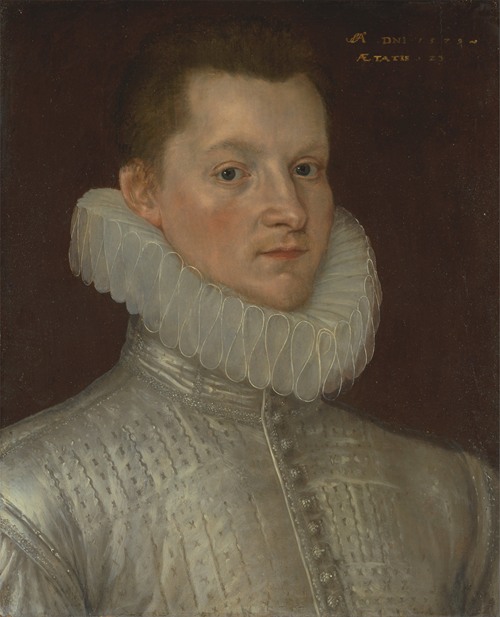
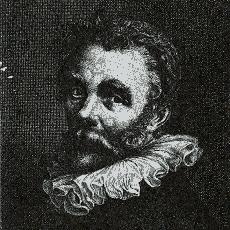
Cornelis or Cornelius Ketel was a Dutch Mannerist painter, active in Elizabethan London from 1573 to 1581, and in Amsterdam till his death. Ketel, known essentially as a portrait-painter, was also a poet and orator, and from 1595 a sculptor as well.
According to Ketel's biography, written by his contemporary Karel van Mander, he seems to have wanted to concentrate on the most prestigious of the hierarchy of genres, history painting, which included mythological subjects, but after he left France he is known almost entirely as a portrait-painter. Neither England nor Holland had much demand for large history paintings during his lifetime, and none of Ketel's histories or allegorical paintings are known to have survived intact, although drawings and prints survive. He did however significantly influence the development of the largest type of painting commonly produced in the United Provinces at this period, the civic group portrait.
Ketel was born in Gouda in 1548 as an illegitimate child of Elisabeth Jacobsdr. Ketel and the art collector Govert Jans van Proyen. The famous Gouda glassmaker Dirck Crabeth encouraged him to start painting as a student of his uncle, Cornelis Jacobsz. At the age of 18, he became a student of the Delft painter Anthonie Blocklandt. He later traveled to Paris where he lived with Jean de la Hame, glass-painter to King Charles IX. From Paris he went to Fontainebleau, where he was working in 1566, in the final years of the School of Fontainebleau, a sojourn which was no doubt decisive in forming his taste for Mannerist allegory. He was forced to leave France in 1567 when all citizens of the Habsburg Netherlands were expelled.
He returned to Gouda, but the economy there was severely hit by the occupation of the city in 1572 by the Geuzen rebels, followed in 1573 by a plague which killed 20% of the population and the Dutch Revolt which was entering a new phase that destabilised daily life throughout the Netherlands. Next, Ketel is recorded in England, and was one of several exiled Netherlandish artists active at the Tudor court in the 1570s. Cornelis Ketel married Aeltgen Gerrits in London in 1573. The biographer Karel van Mander notes his portrait of Sir Christopher Hatton, of the Earl of Oxford, and various noblemen, their wives and children. In 1578, permission was granted for a portrait of Queen Elizabeth, when on a visit to Anne Seymour, Duchess of Somerset at Hanworth Park House in Middlesex.
Finding no market in England for his preferred allegorical subjects, Ketel returned to the Low Countries as his son Rafaël was born in Amsterdam in 1581. Ketel introduced the full-length group portrait format to the Dutch burghers with great success, and seems to have been mostly commissioned as a portraitist. The Dutch taste emerging from the revolt was hostile to Mannerist allegory and even to simpler mythological subjects in art, which were widely associated with the hated Habsburgs, the rulers against whom the Dutch were rebelling. He also painted some religious subjects; it is likely he was Remonstrants, just as his friend Hendrick de Keyser, the city architect and sculptor. His son Thomas de Keyser is thought to have been pupil of Cornelis van der Voort and van der Voort (born ca. 1576) is thought to have been a pupil of Ketel; they all became successful Amsterdam portraitists and commissioned with schuttersstukken. The Danish-born Pieter Isaacsz was certainly a pupil, and Van Mander mentions more. One was Wouter Crabeth from Gouda.
After the death of wife in 1602, he remarried in 1607 to Aeltge Jans, but not in a Calvinist church as he was an Arminian or a Remonstrant. This marriage produced one son, Andries, who died at a very young age. Ketel suffered a stroke and made his will in November 1613, witnessed by Hendrick de Keyser. He died in August 1616.
